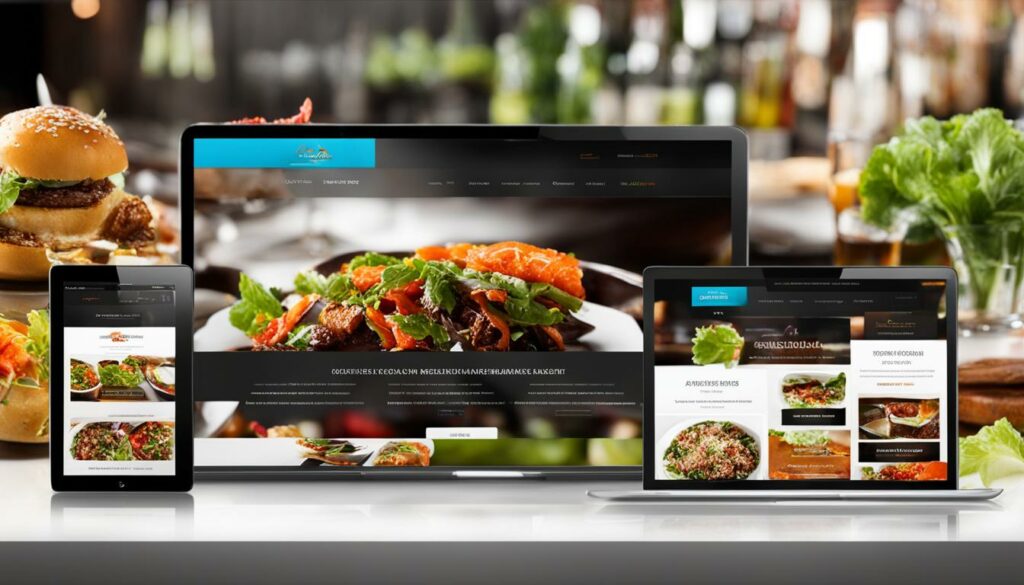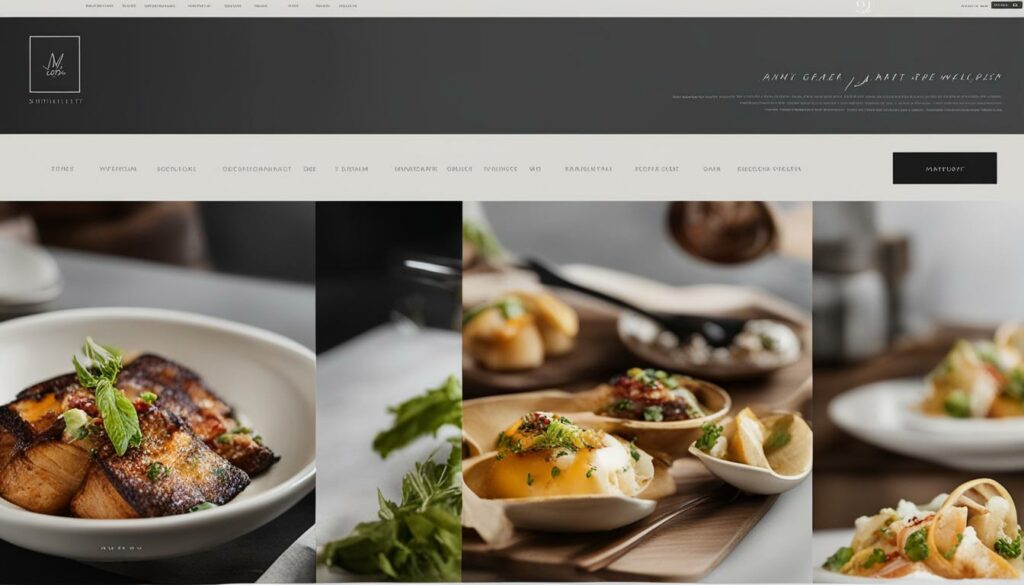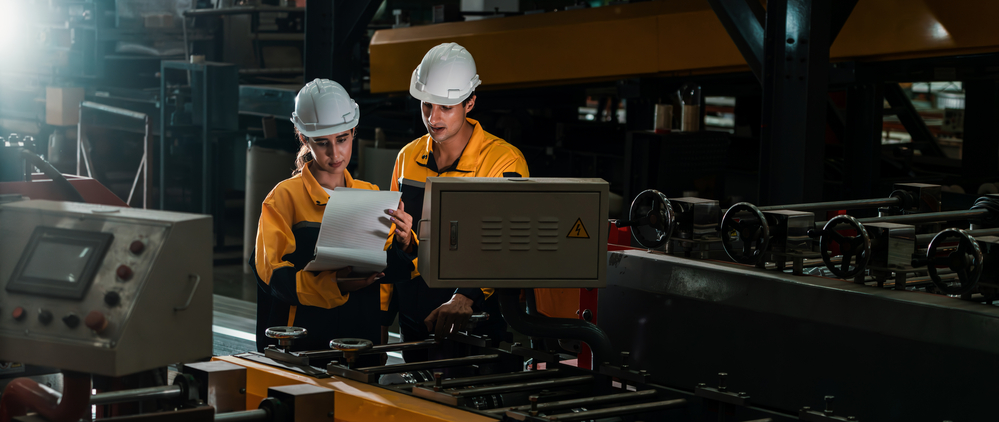In 2024, the restaurant industry is poised for a revolution in marketing strategies and website design. By embracing emerging trends, you can create a competitive edge, attract adventurous diners, and align with the preferences of younger generations like Millennials and Gen Z. Incorporating popular trends into your marketing strategies allows you to leverage your popularity on social media platforms and increase sales and revenue. But to achieve all of this, you need a well-designed and captivating restaurant website that entices diners to explore your offerings.
Key Takeaways:
- Embrace emerging trends to create a competitive edge
- Attract adventurous diners and engage with Millennials and Gen Z
- Leverage the power of social media to increase sales and revenue
- Create a well-designed and captivating restaurant website
- Entice diners to explore your offerings and boost online presence
Why You Should Care About Emerging Restaurant Trends
Staying ahead of emerging restaurant trends is crucial for the success of your restaurant. Adapting to these trends allows you to meet customer expectations, differentiate yourself from the competition, and align with changing consumer behaviors. By incorporating emerging trends into your marketing strategies, you can create fresh and compelling content that attracts attention and engagement from both existing and potential customers.
As the restaurant industry continues to evolve, staying informed about emerging trends will give you a competitive edge. Keep an eye on the latest restaurant industry trends to understand what diners are looking for and how you can meet their needs.
Meeting Customer Expectations
- By staying updated on emerging trends, you can better understand and fulfill the expectations of your target audience.
- Customers appreciate restaurants that are in tune with their preferences and desires.
- By offering innovative and trendy dishes, experiences, or services, you can attract and retain customers.
For example, if sustainability is an emerging trend, you could focus on using locally sourced ingredients or implementing eco-friendly practices in your restaurant. This not only appeals to environmentally conscious customers but also sets you apart from competitors who have not yet embraced this trend.
Differentiating Yourself from the Competition
- By following emerging trends, you can differentiate yourself from other restaurants in your area.
- Diners are always looking for unique and exciting experiences.
- Adopting new trends gives you the opportunity to offer something fresh and enticing.
For instance, if you notice that experiential dining is gaining popularity, you could explore immersive dining concepts or interactive menu presentations to create a memorable experience for your customers.
Aligning with Changing Consumer Behaviors
- Consumer behaviors and preferences are constantly evolving.
- By keeping up with emerging trends, you can adjust your offerings and marketing strategies to meet these changing behaviors.
- This enables you to stay relevant and appeal to a wider customer base.
If you observe that more people are opting for online ordering and delivery, you can invest in developing a user-friendly online ordering platform or partner with popular delivery services to cater to these changing preferences.
Remember, incorporating emerging restaurant trends into your marketing strategies helps you stay relevant, attract more customers, and ultimately increase your revenue. Keep an eye on the latest industry developments, experiment with new ideas, and monitor the response from your target audience to refine and optimize your approach.
Projected Marketing Strategies for Restaurants in 2024
In 2024, the restaurant industry is set to adopt a range of innovative and impactful marketing strategies. These strategies aim to enhance the dining experience, engage customers, and attract a diverse customer base. With the rapidly evolving landscape of the food industry, it is crucial for restaurants to stay ahead of the curve and embrace these projected marketing strategies.
Highly Immersive and Exclusive Dining Experiences
The future of dining lies in creating highly immersive and exclusive experiences that leave a lasting impression on customers. Restaurants will focus on providing unique culinary adventures through immersive design elements, interactive technology, and personalized service.
Hyper-Personalization through Mobile Apps
Restaurants will leverage the power of mobile apps to offer hyper-personalized experiences to their customers. Through data-driven insights, restaurants will customize menus, offers, and recommendations based on individual preferences, ensuring a personalized dining journey.
Sustainability-Focused Campaigns
As sustainability becomes an increasing concern for consumers, restaurants will align their marketing strategies with eco-friendly practices. Sustainability-focused campaigns will highlight efforts such as farm-to-table sourcing, reducing food waste, and using eco-friendly packaging, catering to the growing demand for environmentally conscious dining options.
Virtual Reality Enhancements
Virtual reality (VR) will play a significant role in elevating the dining experience. Restaurants will incorporate VR technology to showcase their unique ambiance, enable virtual tours of their kitchens, and provide immersive storytelling, allowing customers to engage with the brand on a whole new level.
Influencer-Driven Collaborations
Collaborating with influencers and celebrities will continue to be a successful marketing strategy for restaurants. These partnerships will help increase brand visibility and attract a wider audience. Restaurants will strategically work with influencers to create buzz, generate user-generated content, and drive foot traffic.
Interactive and Witty Social Media Campaigns
Social media platforms will remain a crucial marketing tool for restaurants in 2024. To stand out from the competition, restaurants will focus on creating interactive and witty social media campaigns that engage their audience, evoke emotions, and encourage social sharing.
Wine Subscription Clubs
Restaurants will introduce wine subscription clubs to cater to wine connoisseurs and enthusiasts. These clubs will provide curated selections of wines, exclusive offers, and educational content, creating an ongoing relationship with customers.
QR Code Integration for Contactless Menu Access
Contactless dining experiences will become the norm, with restaurants integrating QR codes for menu access. This seamless approach will enhance convenience and safety by eliminating the need for physical menus, ensuring a smooth and hygienic dining experience.
Nostalgia-Inspired Cocktail Menus
Nostalgia-inspired cocktail menus will tap into customers’ emotional connections and memories. These menus will feature classic cocktails with a modern twist, evoking nostalgia and providing an element of familiarity.
Menus Focused on Health and Wellness
As health and wellness take center stage, restaurants will prioritize offering menus focused on nutritious and mindful dining options. Plant-based dishes, gluten-free alternatives, and allergen-friendly options will be prominently featured, catering to the evolving dietary preferences of customers.
How to Choose the Right Restaurant Marketing Strategy
Selecting the most effective restaurant marketing strategy for your business is a critical decision that requires careful consideration. By taking into account various factors such as your target audience, unique restaurant attributes, current industry trends, and business goals, you can make an informed choice that drives success in your marketing efforts.
To begin, it’s essential to understand your target customers’ demographics, preferences, and behaviors. This knowledge will help you tailor your marketing strategies to resonate with your audience and attract their attention. Consider conducting market research or analyzing customer data to gain these valuable insights.
Next, take a close look at your successful competitors and evaluate their marketing strategies. Identify any gaps in the market where your restaurant can differentiate itself and focus on providing unique value to customers. Clearly articulate your unique selling proposition (USP), emphasizing what makes your restaurant stand out from the competition.
Establish specific marketing goals that align with your budget and overall business objectives. Whether your aim is to increase brand awareness, boost customer engagement, drive website traffic, or improve sales, having clear objectives will guide your decision-making process.
It is crucial to stay informed about the latest trends in the restaurant industry. Subscribe to industry publications, attend conferences and webinars, and follow influential voices in the food and beverage sector. By staying up-to-date, you can integrate new marketing strategies and approaches into your overall plan.
Diversify your marketing efforts across multiple channels to reach a broader audience. Consider utilizing social media platforms, email marketing campaigns, content marketing, search engine optimization (SEO) techniques, and local partnerships to maximize your reach and impact.
Don’t forget to evaluate the financial resources available for marketing initiatives. Allocate a budget specifically for marketing activities and ensure that it aligns with your goals and aspirations. Monitor your spending and adjust your strategies as necessary to optimize your return on investment.
When choosing a marketing strategy, it can be helpful to implement strategies on a small scale initially. This allows you to measure key performance indicators and gather feedback from customers to refine and optimize your approach. By testing various strategies, you can determine which ones resonate most with your target audience and deliver the desired results.
Remember, implementing a successful restaurant marketing strategy requires an ongoing commitment to monitor and adapt your approach. Regularly evaluate your efforts, track your progress, and make adjustments as needed to ensure sustained growth and success for your restaurant.
Implementing effective marketing strategies is essential for your restaurant’s success. By carefully selecting the right strategies and continuously monitoring and optimizing your approach, you can attract more customers, increase your revenue, and establish your restaurant as a top dining destination. Use this guide as a starting point to develop a successful marketing strategy tailored to your unique restaurant and goals.
Importance of Having an Attractive and Well-Structured Restaurant Website
In the digital age, having an attractive and well-structured restaurant website is crucial for the success of your business. A well-designed website acts as a virtual doorway, allowing potential customers to easily access important information about your restaurant and make informed decisions.
With an attractive and visually appealing restaurant website, you can showcase your menu, highlight special offers, and provide easy online reservation and ordering options. This convenience not only enhances the overall customer experience but also increases the likelihood of customers choosing your restaurant over competitors.
Enhanced Online Visibility
Having a restaurant website boosts your online presence and visibility. By implementing effective SEO strategies, you can improve your website’s ranking on search engines, making it easier for potential customers to find your restaurant when searching for dining options in your area.
An attractive website design, coupled with compelling content and enticing visuals, will engage visitors and encourage them to spend more time exploring your website and learning about your restaurant.
Showcase Your Unique Brand Identity
Your restaurant website provides an opportunity to showcase your unique brand identity and establish a strong online presence. Through carefully designed visuals, captivating images, and compelling messaging, you can convey your restaurant’s ambiance, culinary offerings, and overall brand personality.
By aligning your website design with the identity and values of your restaurant, you can create a lasting impression on visitors and build a strong brand reputation.
Control Over Branding and Customer Experience
Harnessing the power of a well-structured restaurant website allows you to have control over your branding and customer experience. Unlike relying solely on third-party delivery platforms, having your own website enables you to provide a cohesive and consistent experience for your customers from the moment they land on your site.
With a well-thought-out website, you can curate a seamless user journey, ensuring that visitors easily find the information they need, such as menus, opening hours, and contact details. This control allows you to shape the customer’s perception and maintain a strong connection between your brand and the overall dining experience.
“A well-designed and attractive restaurant website serves as a virtual storefront, enticing potential customers to step inside and experience the unique offerings of your establishment.”
Having an attractive and well-structured restaurant website not only enhances your online visibility but also allows you to showcase your unique brand identity and control the customer experience. It is an essential tool for attracting and captivating potential customers, driving more traffic to your restaurant, and ultimately increasing your revenue.
Top Design Trends for Restaurant Websites in 2024
In 2024, restaurant websites are expected to incorporate immersive design trends to provide a memorable and engaging user experience. These design trends have the potential to transform the way restaurants showcase their brand and interact with their online audience. By incorporating these trends into their web design, restaurants can create visually appealing, user-friendly, and modern websites that attract and retain visitors.
Dark Mode Themes
One of the design trends gaining popularity is the use of dark mode themes. Dark backgrounds with contrasting text and vibrant images create a visually stunning effect and provide a unique browsing experience. Dark mode is not only visually appealing, but it also reduces eye strain and conserves device battery life, making it an attractive option for users.
Microinteractions for Instant Feedback
Microinteractions are subtle animations or visual cues that provide instant feedback to users. These interactions can include hover effects, button animations, or progress indicators. Incorporating microinteractions into restaurant websites enhances user engagement and creates a more interactive browsing experience.
Augmented Reality Menus for Enhanced Exploration
Augmented reality (AR) menus allow users to explore dishes and beverages on the menu in a more interactive and immersive way. By integrating AR technology into their websites, restaurants can provide customers with a unique and engaging way to browse and select their meals, elevating the overall dining experience.
Interactive Maps for Easy Navigation
Interactive maps are becoming an essential feature for restaurant websites. They not only help customers find the restaurant’s location but also provide additional information such as nearby parking, public transportation options, or popular landmarks. By incorporating interactive maps, restaurants can enhance user experience and make it easier for customers to visit their establishment.
Video Backgrounds to Showcase Culinary Experiences
Video backgrounds are an effective way to showcase the ambiance, culinary experiences, and overall atmosphere of a restaurant. By incorporating high-quality videos that highlight the dining experience, restaurants can create a visual impact that entices visitors and gives them a glimpse of what to expect when dining at the establishment.
Parallax Scrolling for Storytelling and Ambiance Setting
Parallax scrolling is a technique that creates an illusion of depth by moving different layers of content at different speeds as the user scrolls. This design trend can be used to create visually stunning storytelling experiences on restaurant websites. By incorporating parallax scrolling, restaurants can showcase the unique features and ambiance of their establishment, captivating visitors and immersing them in their brand narrative.
Minimalistic Design for Elegance and Performance
Minimalistic design continues to be a popular trend in web design across industries. For restaurant websites, a minimalistic approach focuses on simplicity, elegance, and performance. Clean layouts, ample white space, and understated typography create a visually pleasing and clutter-free browsing experience, allowing the restaurant’s branding and content to take center stage.
Importance of a Flexible Website Design
To ensure the long-term success of your restaurant website, it is crucial to prioritize flexibility and adaptability in your web design. By choosing a platform like WordPress or Drupal, you can easily update, maintain, and customize your website, keeping it in line with the latest design trends and functionalities. With a flexible website design, you can future-proof your online presence and stay ahead of the competition.
To keep your website engaging and relevant, it is essential to regularly update your content. By consistently refreshing your website with new information, promotions, and menu items, you can provide a dynamic experience for your customers and encourage return visits. Implementing a minimalist design can also contribute to a timeless and user-friendly website that appeals to a wide range of visitors.
Allocating a budget for updates and improvements is essential for maintaining a flexible web design. By setting aside funds specifically for design enhancements, you can ensure that your website remains visually appealing and functional. Consider seeking the services of professional web design experts who can optimize your website’s performance and create a visually stunning online presence for your restaurant.
Remember, a flexible website design is key to staying relevant, engaging customers, and outperforming your competitors. By investing in a website that can easily adapt to changing trends and customer expectations, you can future-proof your restaurant’s online presence and set yourself up for long-term success.
“A flexible website design allows you to adapt, evolve, and present your restaurant in the best possible way online.”
- Choose a platform that offers flexibility and adaptability, such as WordPress or Drupal
- Regularly update your website’s content to stay relevant and engaging
- Implement a minimalist design that is timeless and user-friendly
- Allocate a budget for updates and improvements
- Seek the services of professional web design experts to create a visually appealing and functional website
By following these steps, you can create a website that is not only visually appealing but also adaptable to changing trends and customer preferences. Invest in a flexible website design to ensure the longevity and success of your restaurant’s online presence.
Benefits of Minimalistic Web Design for Restaurants
Minimalistic web design offers numerous benefits for restaurants. With its sleek and elegant aesthetic, it captivates users and provides a visually pleasing experience. By embracing simplicity and removing unnecessary elements, minimalist design enhances the user experience and improves website performance. This allows visitors to focus on the most important aspects of your website, such as your menu, food photography, and reservation options.
A key advantage of minimalistic web design is its ability to adapt to different devices. With responsive design, your website will look its best on various screen sizes, whether it’s a desktop, tablet, or smartphone. This ensures that potential customers can easily navigate your website, regardless of the device they are using to access it.
When implementing minimalist design principles, it’s important to choose a clean color palette that complements your brand and evokes the desired ambiance of your restaurant. High-quality images that showcase your food and atmosphere can create a powerful visual impact. Clear typography enhances readability and ensures that important information is easily legible.
Ample white space, or negative space, is another key element of minimalistic design. It helps to create a sense of elegance and simplicity, allowing your content to breathe and stand out. By using white space strategically, you can draw attention to important elements and create a clean and uncluttered website.
Aesthetically pleasing and user-friendly, minimalist web design aligns with modern design trends that prioritize clean aesthetics and usability. It creates a lasting impression on visitors, encouraging them to explore your website further and ultimately make a reservation or visit your restaurant in person.
Enhance your restaurant’s online presence with a minimalistic web design that embodies the essence of your brand. Contact our expert designers at Hyperlinks Media for a sleek and elegant website that attracts and engages diners. Call us at (281) 693-5372 or visit our website to get started.
Designing a Website with Scalability in Mind
When it comes to designing a website, scalability and adaptability are key considerations for long-term success. By choosing a content management system or website platform that allows for easy updates, customization, and integration of new technologies, you can ensure that your website remains relevant and competitive in the ever-evolving digital landscape.
Developing a comprehensive content strategy is another crucial aspect of creating a scalable website. By consistently producing fresh and engaging content, you can attract and retain visitors, boost your search engine visibility, and establish your brand as a thought leader in your industry.
It’s also important to allocate a budget for design updates and improvements. As technology advances and design trends shift, investing in regular updates will help keep your website up-to-date and visually appealing.
Staying on top of emerging trends and technologies is essential for future-proofing your website. By partnering with professional web design experts who are knowledgeable about the latest advancements, you can ensure that your website remains adaptable and equipped to meet the changing needs of your audience.
“A scalable and adaptable website design is crucial in today’s fast-paced digital world. By planning ahead and building a website that can easily accommodate growth and change, you can save time, money, and effort in the long run.”
– Brian Johnson, Web Design Expert
By prioritizing scalability, adaptability, and future-proofing in your website design strategy, you can create a website that not only performs well today but also has the potential to grow and evolve with your business.
Key Takeaways:
- Choose a content management system or website platform that allows for easy updates, customization, and integration of new technologies.
- Develop a content strategy to keep your website fresh and engaging.
- Allocate a budget for design updates and improvements.
- Stay informed about emerging trends and technologies in web design.
- Consult with professional web design experts to ensure your website remains scalable, adaptable, and future-proof.
Importance of Regular Maintenance and Updates for Web Design
Regular maintenance and updates are paramount for the success of your web design. By keeping your website up-to-date with the latest design trends, functionalities, and technologies, you ensure that it remains competitive, user-friendly, and optimized for future developments. Web design is an ever-evolving field, and neglecting regular maintenance and updates can result in an outdated and underperforming website.
To keep your website fresh and engaging, it’s crucial to regularly update your content. By providing new and relevant information, you not only keep your audience informed but also improve your search engine ranking. Search engines favor fresh and updated content, which can help drive more organic traffic to your website.
Allocating a budget specifically for design updates and improvements is essential. This allows you to invest in new features, enhance user experience, and stay ahead of your competitors. Collaborating with professional web design experts ensures that your website receives the necessary updates and improvements to remain competitive in a rapidly changing digital landscape.
The Benefits of Regular Maintenance and Updates for Web Design:
- Improved Performance: Regular updates optimize your website’s performance, ensuring fast loading times, smooth navigation, and a seamless user experience.
- Enhanced Security: Maintenance and updates help protect your website from potential security threats, keeping sensitive data and user information secure.
- Adaptability: Regular updates allow your website to adapt to changing user behaviors, device trends, and industry standards.
- Optimized SEO: Keeping your website up-to-date with fresh content and improved technical aspects helps boost your search engine ranking, increasing your online visibility.
- User Satisfaction: A well-maintained website with updated content and modern design elements provides a positive user experience, encouraging visitors to explore and engage with your site.
Regular maintenance and updates are like nurturing a flower—it requires attention, care, and continuous improvement to flourish in a competitive digital environment.
Remember, web design is an ongoing process. By prioritizing regular maintenance and updates, you ensure that your website remains relevant, functional, and appealing to your target audience. Trusting professional web design experts to handle these tasks allows you to focus on your core business while benefiting from their expertise and industry knowledge.
Continue reading to discover the importance of a well-structured and attractive restaurant website in the next section.
Conclusion
In conclusion, the success of your restaurant in 2024 and beyond heavily depends on having a fresh and well-designed website. By incorporating emerging restaurant trends, selecting the right marketing strategies, and implementing immersive and minimalist design elements, you can effectively attract and engage diners, enhance your online presence, and stay ahead of the competition. It is essential to allocate a budget for regular design updates and improvements, ensuring that your website remains visually appealing and future-proof.
To achieve optimal results, it is highly recommended to seek the expertise of professional web design experts such as Hyperlinks Media. With their knowledge and experience, they can guide you in creating a visually captivating website that showcases your culinary brand. The team at Hyperlinks Media is committed to delivering exceptional web design services tailored to your specific needs. Contact Hyperlinks Media at (281) 693-5372 today and take the first step towards elevating your restaurant’s online presence.
Investing in a well-designed and future-proof website will not only attract more diners but also enhance your credibility and reputation. With the right web design strategies, your restaurant can engage with a wider audience, increase online visibility, and ultimately drive more customers through your doors. Stay ahead of the curve by embracing innovative design trends, implementing marketing strategies that align with your target audience, and regularly updating your website to remain competitive in the ever-evolving digital landscape.












